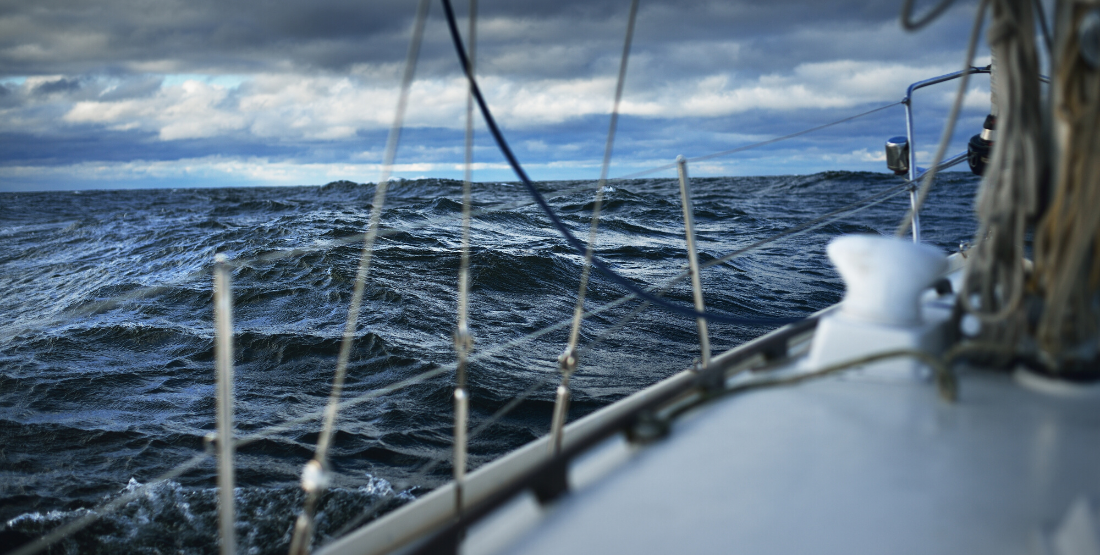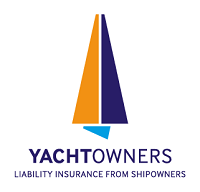Weather Forecasts, Safe Passage and Safe Berths

Adverse weather enhances the risks for yachts and their crew, not only in open waters but also in bays, anchorages, ports and marinas. The key to controlling damage to yachts, their guests and crews, by reducing the number of weather-related incidents, is advance planning.
Mariners can generally obtain a fairly accurate picture of weather conditions expected in their cruising areas through free national weather forecasting services and both cellular and satellite communications. However, it is important to be aware that conditions in both temperate and tropical zones can change rapidly, meaning that the most recent forecast can quickly become inaccurate.
Paid weather services can deliver bespoke forecasting, constant reassessments of developing weather systems and routing advice based on the yacht’s specific characteristics and performance parameters, and the cost of these services can be outweighed by the benefits of potential fuel savings, reduced risk of structural damage to the yacht, and enhanced guest comfort and safety.
Adverse Weather Risk Assessment
All yacht owners should carry out relevant and regular risk assessments, which take into account the above points reflective of the current manning levels of the vessel. Risk assessment templates are freely available online to assist with pre-planning for voyages or harbour stays.
• A scale of likelihood and severity.
• A brief description of identified risks.
• Actions which may mitigate each risk.
On voyages, the categories of risk may be mechanical (e.g. failure of a critical system and/or item of equipment); human (e.g. crew endurance, susceptibility to sea-sickness, sea experience and/or familiarity with the vessel); or environmental (e.g. nature of coastline along the route, furthest point of voyage from land, range of rescue services, forecasting reliability for the area).
For harbour stays, an important factor to include is the manning level, not only in relation to dealing with an onboard emergency, but also in relation to local regulations which may take priority over Flag State regulations.
Some General Considerations when Preparing for Navigation
Before departure
• Ensure that a rolling five-day weather forecast is available for the immediate area, and for local passages.
• Maintain a more extended period of rolling weather forecasts for longer ocean passages, to cover predicted conditions en route and on arrival.
• Use dedicated forecast services just prior to departure and en route, tailored to the yacht’s sea-keeping characteristics and limits.
• Have alternative routes, destinations and shelter ports or anchorages incorporated into the voyage plan prior to departure, to ease decision-making and reduce stress in the event of sudden changes in conditions.
• In the event of a delayed departure, prepare some options calculated on speed, distance and fuel consumption to make up time as soon as a weather window opens.

While cruising
• Maintain the rolling forecast horizon.
• Constantly monitor the watertight integrity of the yacht, i.e. closure of doors and other openings.
• Give due consideration to the impact that slowing down, speeding up or making a diversion may have on fuel consumption due to weather conditions.
• Check that all loose items are well secured.
• Know your own yacht’s performance and stability characteristics. In extreme weather, sea-keeping should outweigh any considerations of maintaining course or speed to keep to a timetable.
• Free surface effects (slack tank effects) which are largely overlooked on motor yachts should be incorporated into passage planning in anticipation of adverse weather.
• When approaching apparent shelter, heavy rolling and difficulties with course control can be experienced in the final approaches due to refracted swells from protective headlands, or breakwaters coinciding with sea swells to produce extra large seas.
While berthed
Being in port is no guarantee of safety, and may result in damage to the yacht in the event that there is contact with a quay or other vessels. Some points to consider while alongside a berth include:
• The fetch of waves inside the port or marina.
• Exposure to swells rolling in through the entrance, and associated surging.
• Enhancement of wind gusts within the port.
• Wind loads on the yacht, especially beam winds.
• Strength of quayside bollards (or pontoon cleats in marinas).
• Integrity of the yacht’s mooring bitts or cleats in relation to breaking strain of mooring lines.
• Raise any deficiencies which could result in contact with improperly moored neighbours to the attention of the authorities.

Warnings of extreme weather conditions
Consider the time frame and alternative havens to move to in advance of the storm’s arrival. This may include:
• Proceeding out to find sea room to ride out the storm.
• Shifting to a more sheltered anchorage.
• Securing a berth in a port outside the danger zone.
• Repositioning within a port.
• Using inland waterways to move beyond the predicted storm surge level of an approaching hurricane.
• Pay attention to the local system of warnings of extreme weather and seek advice as to any particular precautions. If evacuation is advised, comply immediately.
Special actions in relation to yachts in lay-up periods
• Use as many ground lines as available.
• Use a diver to set anchors for extra security (where permissible).
• Use chafing gear where mooring lines pass through fairleads or over the edge of quays and renew as required.
• When severe conditions are expected, back up all lines and fenders.
• Ensure that manning levels are not reduced below the minimum commensurate with the safety of the vessel and of the crew remaining on board.
Emergency contingency plans and drills
Emergency drills carried out regularly on board yachts reduce the risk of the unknown and ensure that all crew are prepared for all eventualities. Drills and emergency contingency plans should always be adjusted to take account of the current manning levels. For instance, crew retained for a repositioning voyage may be different in number and role when in full commission with guests on board. Drills become counter-productive when participants become complaisant with repetition. It is permissible and effective to hold some drills without the full team and concentrate on individual roles. For full team drills, encouraging crews to invent drill scenarios or use case studies, including theatrical role playing, adds realism and impresses lasting lessons.
Carri Woodburn is Head of Loss Protection at The Shipowners' Club
For more information, visit us at www.shipownersclub.com/insurance/yacht
Images: Shutterstock, Pexels, Pixabay
About The Shipowners’ Club
This article has been produced in partnership with Shipowners’ P&I Club. The Club has extensive experience handling claims linked to adverse weather conditions, ranging from crew injuries, pollution, collision damage and property damage, to name a few.
Our specialist liability insurance is a plain language policy designed to meet the unique requirements of the yacht market. It is one of the most comprehensive yacht liability policies available, with no limitation on size, cruising grounds or number of crew and we can tailor our insurance to meet your specific needs.
Our Loss Prevention service supports Members and their brokers in operational and technical matters, assisting yacht owners, operators and managers in minimising their exposure to claims.
A member of the International Group of P&I Clubs which represents over 90% of the world’s ocean-going tonnage, The Shipowners’ Club has insured the liability risks of a significant section of the luxury yacht market for over 25 years.
For more information visit www.shipownersclub.com


Post your comment
You cannot post comments until you have logged in.
Login to post a commentComments
No one has commented on this page yet.
RSS feed for comments on this page | RSS feed for all comments